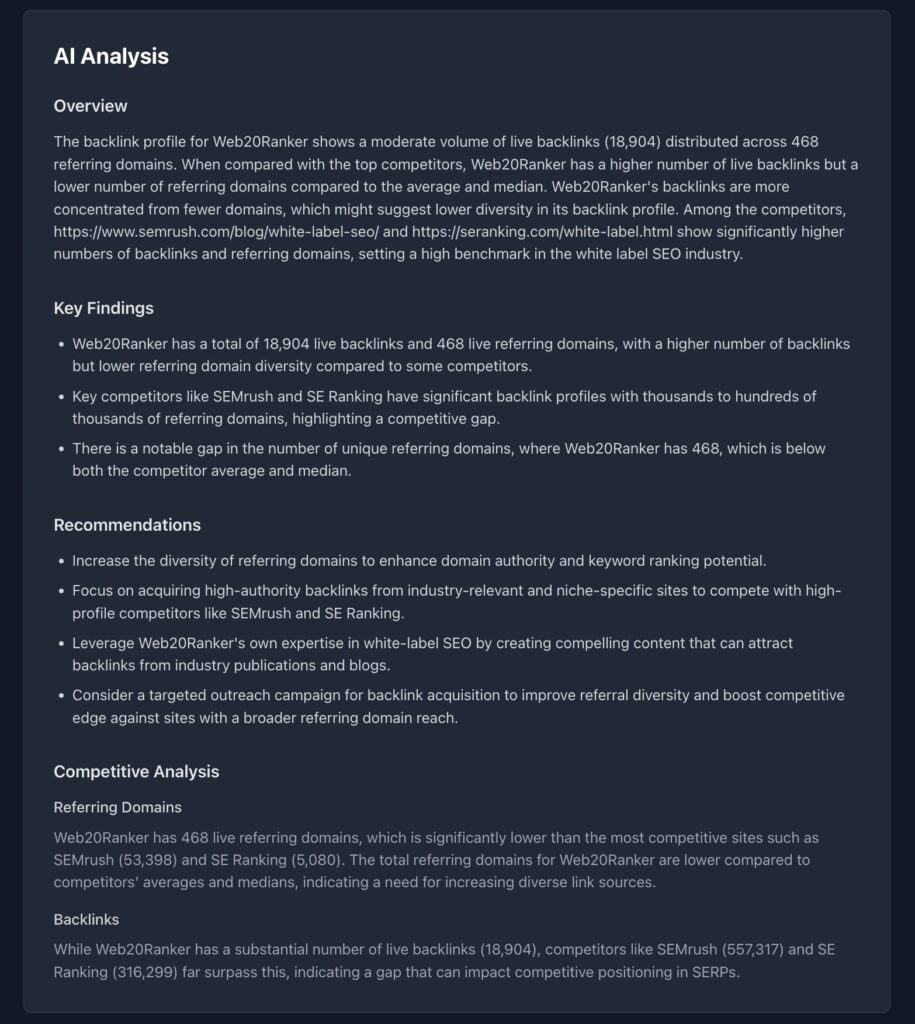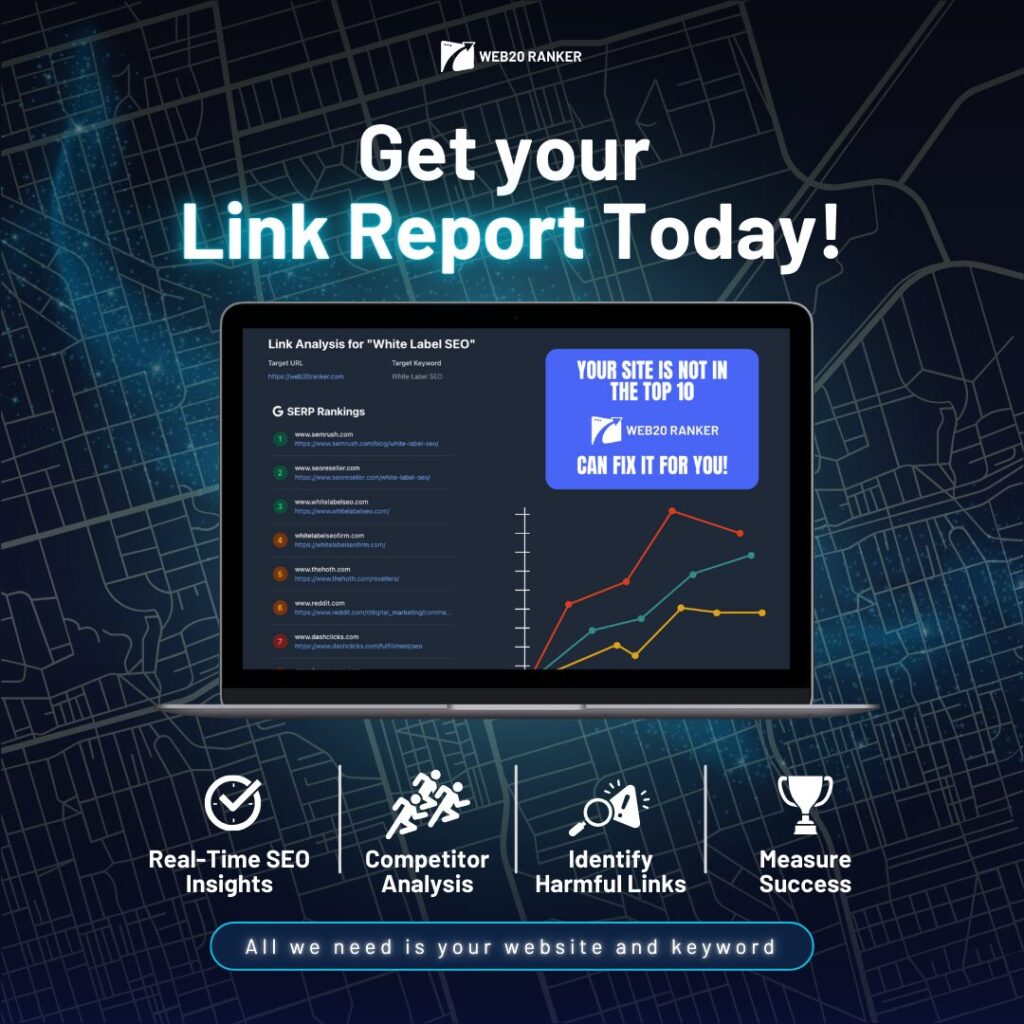Before we dive in, I want to cover – at a high level – our general philosophy on backlink analysis and planning. Although it should become evident as you read on, we want it clear upfront, as it helps us create a linear process for building backlink campaigns.
Like anything about SEO, we believe reverse engineering competitors should always be at the forefront. It’s a crucial step and the most logical strategy to inform your action plan.
In Google’s black boxed world, we have little clues in the form of patents, quality rating guideline docs, resources they publish, etc. While these serve as great resources for SEO testing ideas, we shouldn’t take any of these things at face value. We have no idea if Google is still using protocols from a 15-year-old patent in their current document ranking algorithms. So, we inform ourselves using these tidbits, then we test.

The SEO Mad Scientist was founded as a detective that uses these clues as one of a few information vehicles that inspire tests. But this thin abstract knowledge layer should serve as a sliver of your SEO campaign building strategy.
Then, we have competitive backlink analysis.
I will make a declaration that does not have a counterargument, at least not one of sound logic…
Reverse engineering what’s working in a SERP is the strategy everyone should use to influence what optimizations you perform. There isn’t a better way.
Let’s take a trip back to seventh-grade algebra to simplify this statement into the most palatable example. Solving for ‘x,’ or any variable, requires you to look at what constants exist and then perform some simple order of operations to discover the variable’s value. We can look at what our competitors are doing, the topic coverage of their pages, the links they build, keyword densities, etc.
Now, if you are collecting hundreds or thousands of pieces of correlative data, I would say most of them will be unhelpful. The benefit of tracking more significant swaths of data like this would be to measure when certain things seem to shift to be more causative of rank changes when tuned. For most people, having a much more concentrated list of best practices, a reverse engine will serve you just as well.
The final layer of this strategy is to outperform. As macro as it may seem, especially highly competitive SERPs where it could take years to match the top competitors, building parity with sites in the top spots is phase one. Data-driven Backlink Analysis is key.
Once in parity, the idea is to go above and beyond to feed Google proper signals that continue to push rankings and allow you to create a stronghold at the top of the SERPs. Unfortunately, proper signals and “best practice” items can come down to SEO common sense.
I hate typing that because it thrusts us into a realm of subjectivity. It takes experience, testing, and some notches in the old, old belt of SEO success to build the confidence to identify where your competitors went wrong and how to address that during the planning stages.
5 Steps to Understanding Your SERP Ecosystem
Exploring the ecosystem of websites and links powering a SERP can offer us a smorgasbord of actionable information invaluable to a link plan. In this section, we will organize this data into a digestible system that allows us to identify valuable patterns and insights for our campaign.
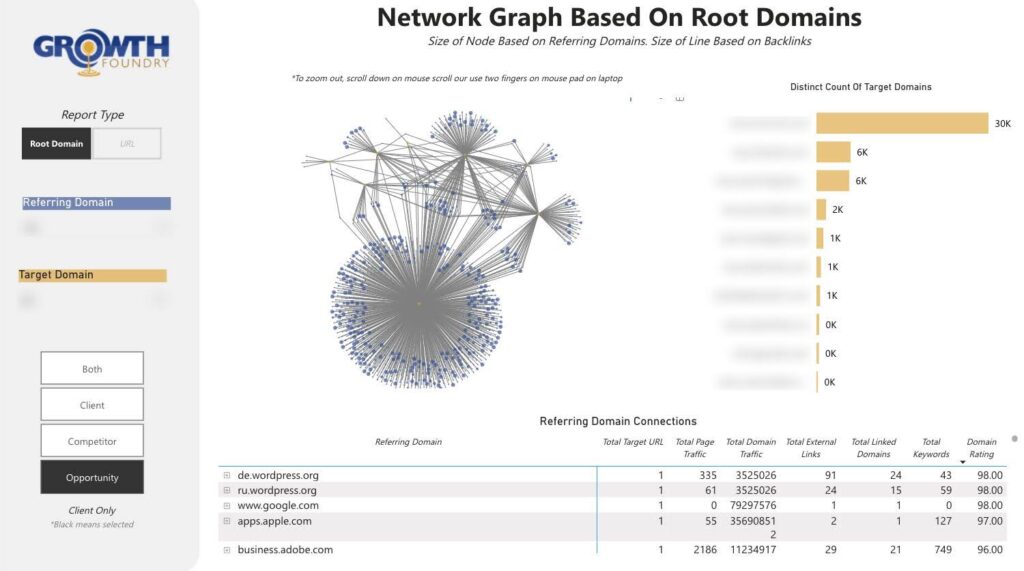
I want to take a quick moment to expand on the thought process that led us to organize the SERP data in this manner. Our protocol for deep diving into the top few competitors is in the next section, a story told if we look further.
Start performing some queries in Google, and you will quickly receive millions of results. Sometimes over 500m results. For example:


While we mainly dedicate our attention to the top few websites to analyze, one could argue that the links pointing to even the top 100 results are statistically significant, or at least they can be, assuming they pass the link litmus test for not being complete spam or junk.
I want large swaths of insight into what powers Google has cached the top-ranking sites in the sea of documents for these queries. Then, with that data, we’re armed with information. Here are just a few of the things we can accomplish.
1. Find prominent links powering your SERP ecosystem
In this case, a prominent link is defined as a link that continues to pop up in our competitors’ backlink profiles. As you can see from the image below, where we are looking at a smaller number of websites in the ecosystem for demonstration purposes, some links point to almost every site in the top 10. If you analyze more competitors, you will uncover more intersections like the one above. I love this strategy and it’s supported by solid SEO theory from a couple of sources, which I will cite below.
- https://patents.google.com/patent/US6799176B1/en?oq=US+6%2c799%2c176+B1– This patent expands on the original PageRank concept by factoring in topics or context, effectively acknowledging that different clusters (or patterns) of links matter differently depending on the subject area. It’s an early example of Google refining link analysis beyond a single global PageRank score, suggesting the algorithm detects patterns of links among topic-specific “seed” sites/pages and uses that to re-rank or refine scoring.
Relevant Quote Excerpts
Implication: Google pinpoints distinct “topic” clusters (or groups of sites) and applies link analysis within those clusters to generate “topic-biased” scores.
While it doesn’t explicitly declare “we favor link patterns,” it reveals Google examines how and where links emerge, segmented by topic—a sharper, more refined take than relying on a single universal link factor.
“…We establish a range of ‘topic vectors.’ Each vector ties to one or more authoritative sources… Documents linked from these authoritative sources (or within these topic vectors) earn an importance score reflecting that connection.”
Relevant Quote (from original paper)
“An expert document is about a specific topic and has links to many non-affiliated pages on that topic… The Hilltop algorithm identifies and ranks documents that links from experts point to, boosting documents that receive links from multiple experts…”
Hilltop is an algorithm that attempts to find “expert documents” for a topic—pages recognized as authorities in a particular field—and sees who they link to. These linking patterns can pass authority to other pages. While not phrased as “Google sees a pattern of links and likes it,” the underlying concept is that if a set of recognized experts commonly link to the same resource (pattern!), It’s a strong signal.
- Implication: If multiple experts in a niche link to a particular site or page, that is recognized as a strong (pattern-based) endorsement.
While Hilltop itself is older, it’s believed that aspects were folded into Google’s broader link analysis algorithms. This concept of “multiple experts linking similarly” effectively shows that Google is looking at a pattern of backlinks.
Although these two are specific to links, a lot of language in the patents alludes to Google “learning” what a quality SERP ought to look like based on quality signals it finds on other relevant documents.
I want to always look for positive prominent signals that repeat themselves during competitive analysis and then take advantage of those opportunities whenever possible.
2. Backlink Analysis: Discovering Outlying Link Opportunities Using Degree Centrality
The apparent list of links we find if we want to build toward competitive parity comes from the top several ranking websites. Manually parsing through dozens of backlink downloads from Ahrefs is painfully tedious work. Even processing that out for a VA or staff member creates a congested queue of never-ending work.
Ahrefs does allow for 10 competitors to be entered in their link intersect tool, so if you are a subscriber (which in my opinion still outperforms all of the other link intelligence tools on the market, nevermind the spotty PR issues they have had in the recent past) you go that route if you’re comfortable with that depth and want to avoid this extra work.
As I mentioned earlier, our interest lies in going far enough outside the list of links every other SEO is building to achieve parity with the top handful of websites. This builds us somewhat of a moat early in the planning phase as we look to stir up the SERPs.
So, we set a few filters in our SERP Ecosystem and look for “opportunities”, defined as links our competitors have that we do not.

Instantly, we find the orphaned nodes on the network graph. Sort the table by DR (I am not in love with 3rd party met, RICS, but it does help for quickly finding nuggets, an extensive list of U, RLs)and seed some absolute powerhouse links that can be added to our outreach workbook.
3. Control and Manage your Data Pipelines
This lets you add new competitors easily and link them into the network graphs. Once you have your SERP ecosystem configured, adding to it is a breeze. Now you can remove spam links you want to ignore, blend competitor data from different related queries to manage a more macro database of backlinks, and much more.
Organizing and filtering your data inside your environment is the first step to creating scalable outputs and operating at a level of detail that your competitors simply cannot. This influx of data can lead you to discover countless new opportunities.
Moving data and creating internal automations while introducing additional layers of data analysis can inspire the innovation of novel concepts and strategies. Make this process your own, and you will find many more use cases for a setup like this, which are far too many to cover in this blog.
4. Identify Mini Authority Websites using Eigenvector Centrality
In graph theory, eigenvector centrality implies that nodes (websites) become more critical as they are attached to other necessary nodes. The more crucial the neighbors of the node, the more vital we deem that node to be.
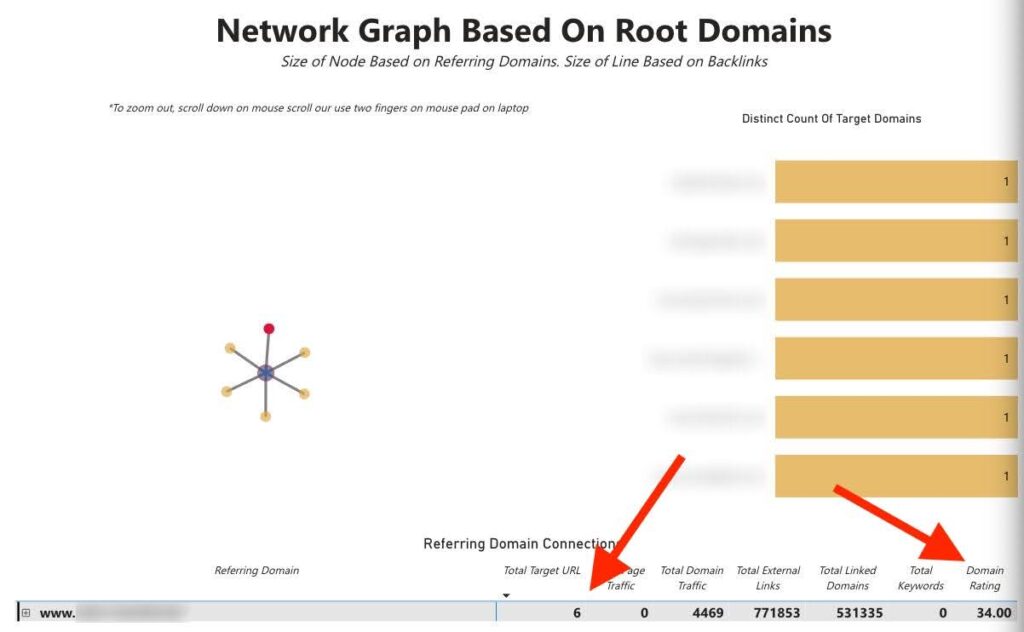
Not beginner friendly, but as stated above, once the data is in your ecosystem, writing the script to find these little gems takes an insignificant amount of time. You can even use AI to help.
5. Backlink Analysis: Identifying and Taking Advantage of Disproportionate Competitor Link Distribution
While the concept isn’t novel, looking at 50-100 websites in the SERP and identifying the pages that get the most links is an excellent way to mine some super variable information.
We can look ONLY for “top linked pages” on a site, but you will not find nearly as much helpful information there, especially on healthy SEO websites. You’ll find some regular link building to the homepage and the leading service or location pages.
Ideally, we are looking for the pages with a disproportionate amount of links. To do this programmatically, you’ll need to filter these opportunities out using some applied math, with the specific mode up to you. This can be a bit difficult because sometimes the number of backlinks you want to set as outliers can quickly change based on the size of the number, for example, Ex. A 20% concentration of links on a website with only 100 links built compared to one with 10 million built is a radically different scenario.
A single page snags 2 million links while hundreds or thousands of other pages scrape together the remaining 8 million, signaling that we should reverse-engineer that page. Did it go viral? Does it offer a tool or a free resource? Something pulls in those links.
With this data, you can start investigating why certain competitors are acquiring atypical amounts of links to specific pages on their site and use it as inspiration to create content, resources, tools, etc. that people probably love to link to.
There is so much more utility in data. Justifies taking the time to assemble a process to look at more significant amounts of link data. The opportunities you can take advantage of are nearly endless.
Backlink Analysis: Getting Started Creating a Link Plan
First, you will need a source(s) for backlink data. We are big fans of Ahrefs as their data consistently outperforms their competitors. With that in mind, blending data from other tools is an excellent idea if the capability exists on your end to do so.
Our link gap tool is the perfect solution. Just plug in your site, and you’ll get everything you need:
- Link metrics visualization
- URL level distribution analysis (live & total)
- Domain level distribution analysis (live & total)
- AI analysis
Map out exactly which links you’re missing—so you can focus on closing the gap and strengthening your backlink profile with less guesswork. But our link gap report doesn’t just give you graphs of data; you’ll also get an AI analysis, including an overview, key findings, competitive analysis, and link recommendations.
Unearthing links in one platform you will not find in the others is commonplace, but you must consider your budget and willingness to ingest the data and normalize it into one format.
Next you will need a data visualization tool. There is no shortage of data visualization tools you can use to accomplish our goal. Here are a few resources to help you choose one:
https://www.toptal.com/designers/data-visualization/data-visualization-tools
https://www.simplilearn.com/data-visualization-tools-article
https://www.reddit.com/r/dataanalysis/comments/171h8g6/freeopensource_data_visualization_tools/
If you choose one from the lists above, jump onto YouTube for some quick tutorials or prompt your favorite AI tool to build a curriculum you can follow. Some great Python libraries have some handy visualization tools. We could also look at open-sourcing our swell if there is enough interest.
All, consider hiring a freelancer to build one of these for you. It’s a viable solution to save time, since it’s not a complex development endeavor.
Narrowing our Focus for Competitive Parity
The first phase of our link planning exercise saw us gathering and looking at more extensive data sets. Then, applying some filters to give us a comprehensive list of backlinks, we can attempt to build for our target URL(s). In the next phase, we will analyze the WHAT.
Determining Anchor Text Plan
When looking at anchor texts, I like to work with the top 3-5 ranking URLs for the query I am after. You can come back to your SERP ecosystem above and create a map of all anchor texts that point to the corpus of websites you are tracking, but for this exercise, we will focus on what Google puts at the top of its SERP.
Keep in mind we are looking at two different views below. One is a raw look at the link gap between pages and the anchor texts that point to the em, and the other is the link-building schedule.
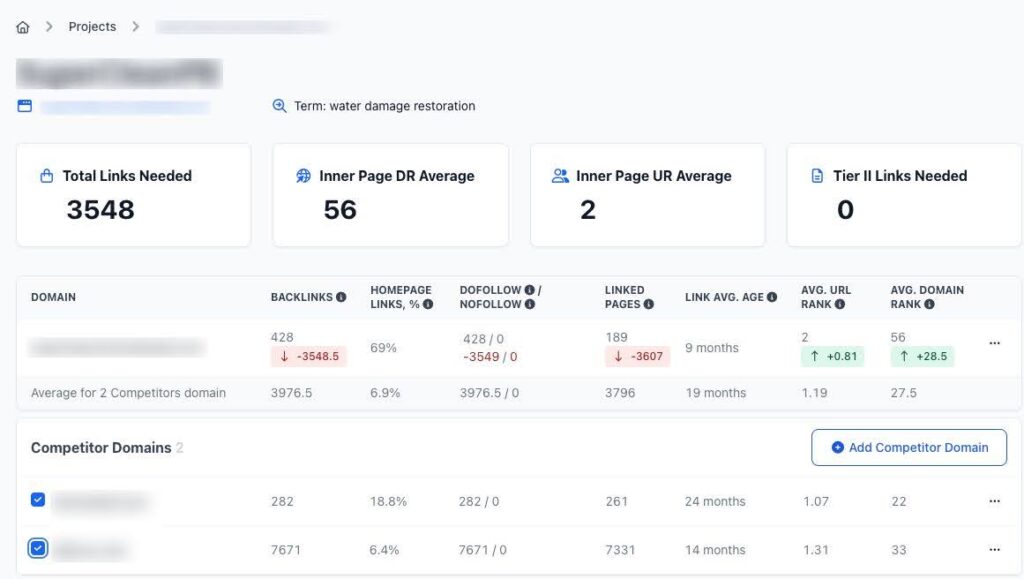
Once the sites are added to the system, you can remove outliers by not selecting them as part of your math. I make this judgment through a manual review, as sometimes a backlink-heavy competitor might appear authoritative, but on closer look, they have a heavily spammed backlink profile.
Building that volume level, especially when creating quality links, to achieve parity with a spammed profile makes little sense.

Personalizing Anchor Text Scores in a Search Engine: This patent describes a method where search engines calculate personalized page importance scores for documents based on user-specific parameters. They combine these scores with information retrieval metrics to create personalized rankings, with anchor text playing a key role in the process.
Ranking Based on Reference Contacts: This patent analyzes a hyperlink’s context, including the anchor text, to assess a document’s relevance and combat manipulative practices like spam. The system evaluating the text adjacent to the stem assigns context identifiers influencing document ranking.
Method for Node Ranking in a Linked Database: This patent introduces a technique that uses the anchor text of links to a document to characterize its relevance, rather than relying solely on the document’s content. By analyzing anchor text descriptions pointing to a page, the system assigns a rank based on how well search query terms match these descriptions.
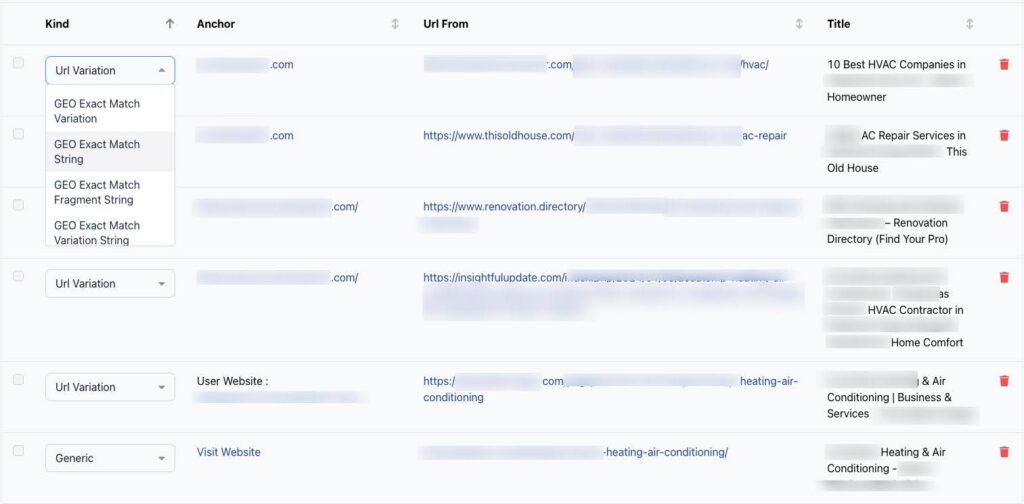
While link classification is done programmatically, we built a moderation dashboard to double-check the outputs and modify them if needed. We originally built Thiinca in 2018 and have been refining the logic for years. We have run immense amounts of data through it, and we usually find the results on point, but we always want to be flexible to match the top performers.

Tier 2 links are an often overlooked metric when people perform competitive analysis. However, when performing a comprehensive backlink analysis, be aware that they can push power for your competitors, and you want to be aware when that’s the case to ensure you are not just matching efforts on tier one. You could be missing out on opportunities because you missed this during the link planning phase.
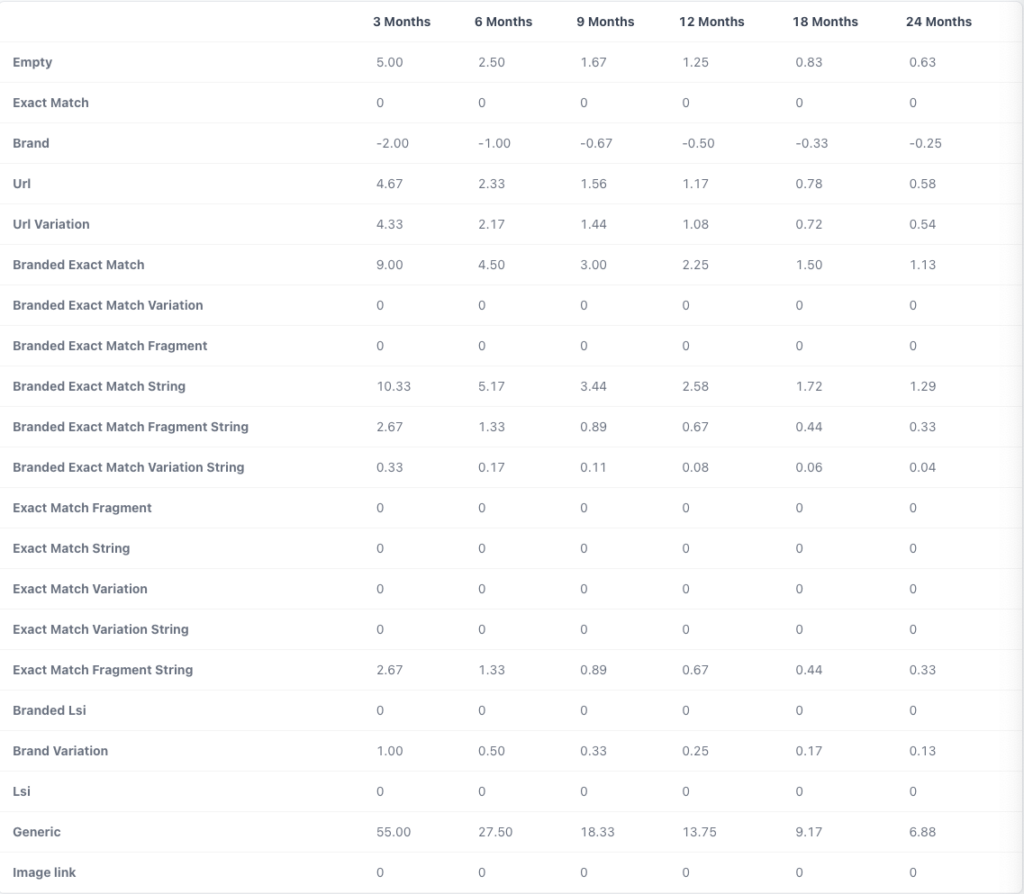
Now that we have completed the backlink gap and anchor text analysis, it’s time to break out a calendar of link building. Tlly gives us an idea of the budget and allows us to set both internal and external expectations for the length of the link-building component of the campaign.
I like to look at the duration and volume perspectives of link building and make final decisions before compiling all of this into a workbook so the link-building team can get started.
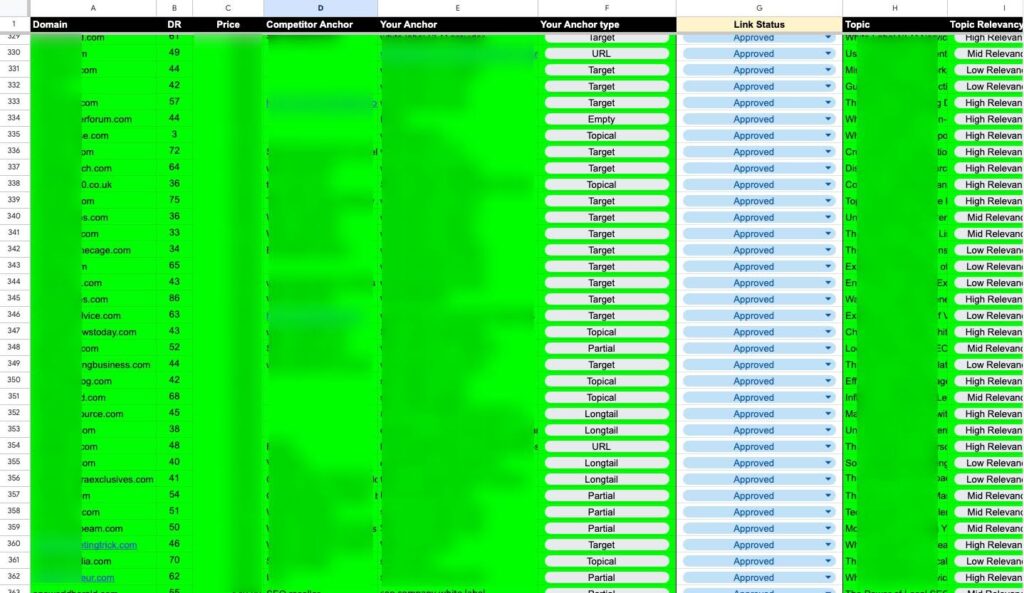
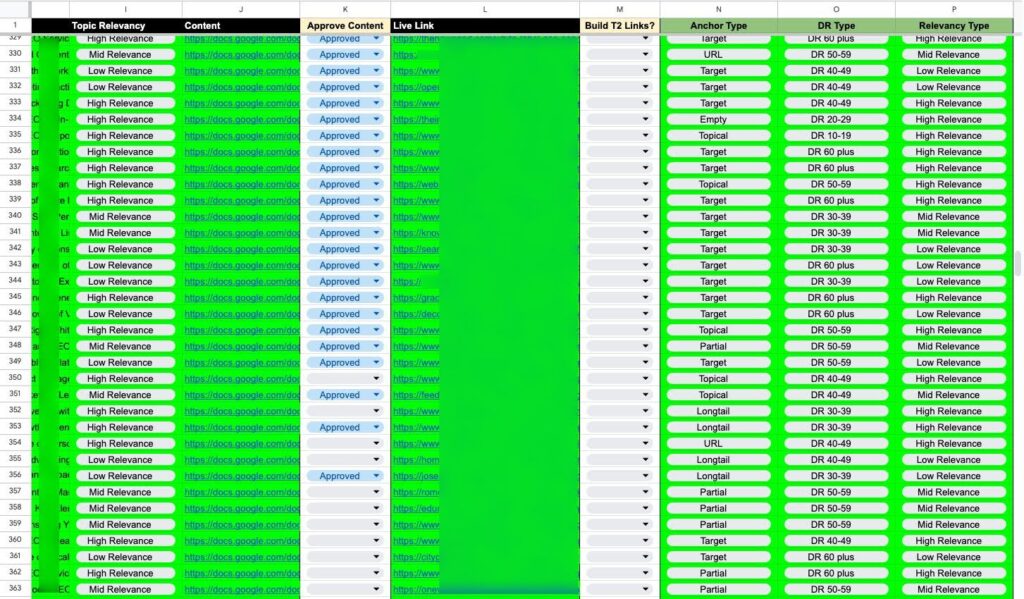
Sorry for the format, but if you zoom in, you can see the layout of the workbook. That’s the most critical aspect. In the following piece, I will show you our outreach link-building processes so you can go from research to ranking. I will also be looking at more link content to produce to supplement some of the areas of this process. I didn’t have the opportunity to cover, lest this turn into a proper book instead of an article.
Don’t Guess at Link Building – Get Your Link Gap Report
Link building is both an art and a science. Building the correct links is complex. It must be done at the right time and in the proper context—can make or break your SEO efforts. Each specific situation requires a carefully tailored approach to ensure your links drive authentically and maximize its impact on your rankings. That’s why data must back your link-building plan.
Get your free link gap report today and discover precisely where your website stands.
This is your opportunity to uncover missed opportunities, outpace competitors, and drive measurable results. Don’t let them have all the top spots; claim your edge now with actionable insights tailored to your goals.


